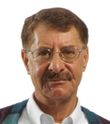Home > Oasis of Peace > Projects & Outreach > Doumia-Sakinah: The Pluralistic Spiritual Centre > The Future Vision of the Palestinian Arabs in Israel
The Future Vision of the Palestinian Arabs in Israel
A meeting in NS/WAS with Prof. Aziz Haidar
Thursday 29 March 2007, by

Professor Aziz Haidar was a member of the committee that drew up the document entitled “The future vision of the Palestinian Arabs in Israel.” In March, 2007 he came to NS/WAS to discuss the future vision document with an audience primarily made up of Jewish and Arab members of the village. Professor Haidar is a researcher and teacher of sociology. He works in several well-known Israeli and Palestinian academic institutions including the Hebrew University, the Van Leer Institute, the Bir Zeit University, Al-Quds University and the David Yelin Teachers’ College.
Haidar opened his talk with a brief review of the historical background that led to the decision to formulate the document. He described the hopes and expectations that the Palestinians in Israel had built over the years, believing that their status would improve as the chances for peace increased. Their hopes climaxed with the signing of the Oslo Accords in 1993. These hopes were dashed leading to despair and ultimately to the outbreak of the October Intifada in 2000.
There had been prior attempts to draw up a document that defined the Israeli Palestinians’ vision of the kind of society that they could live in with dignity. However it was only in recent years that forces came together making it urgent enough to invest the energy required to bring a document to completion. Supported by the United Nations it took a year and a half to build a committee, to decide on the decision-making and writing process and then to complete the work.
Committee members were chosen carefully in order to represent a broad spectrum of Palestinian society. The committee included academics and social activists from a variety of fields and from a variety of religious, social and ethnic backgrounds. No one sat in the committee as a representative of a political party. Women made up thirty percent of the committee and this was after a conscious effort was made to ensure that women’s voices be heard.
After bringing in specialists to study the field and to define tasks, the committee divided into eight groups, each one dealing with a different aspect that the document would address. The final document included four major parts:
- The Palestinians’ viewpoint of the historical developments that explain the Palestinian social reality today.
- Analysis of the situation today.
- The vision of how Palestinians would like to see society in twenty years.
- Steps to be taken and tools to be used in order to realize the vision.
Haidar discussed many of the guiding principles, claims and demands outlined in the document. A primary claim is that Israel, as it is presently defined, is an ethnocracy rather than a democracy. It is a democratic state vis a vis its Jewish citizens and it is a Jewish State in dealing with its Arab citizens. The document criticizes the State’s focus on ethnicity and religion rather than on citizenship as the primary consideration in determining the distribution of resources. The committee calls for “consensual democracy” that recognizes the presence of Jews and Palestinians in the country as two groups and that guarantees “resource, leadership and decision making participation.” The complete document can be found online.
After presenting some of the central issues addressed in the document Haidar went on to discuss reactions that it evoked. For many of Israel’s Jewish citizens the call for democracy was regarded as a “declaration of war”. However the Jewish community in the United States responded much more positively. The committee’s hope was that the American Jewish public would influence local opinion in Israel and to some extent it did. The Israeli media which at first vehemently attacked the Palestinian initiative was softened by American Jewish interest in it. Soon invitations came to present the document at various conferences, the media took a more serious interest in it and even government bodies began to invite committee members for dialogue on the document. Prime Minister Olmart was present for the first quarter of an hour of one of the meetings, though he had no response to make to the challenges posed.
Haidar’s presentation was followed by a discussion session with the audience. A question was raised about criticism within Arab society, particularly about a claim that the document solidified the division between Palestinian citizens of Israel and Palestinians in the Occupied Territories. Haidar answered that the general feeling is that the Palestinians in Israel can no longer wait for other developments. The Israeli State does nothing to improve the situation and the Palestinians must take responsibility for advancing change before another intifada such as that of October 2000 breaks out. Haidar went on to say that those who regard the document as a threat usually misread what is written. The document is a call to allow the Palestinians to take responsibility for matters that directly involve their fate.
Michael Kariyani, a member of NS/WAS who was also on the committee with Haidar, added that the document does not challenge the Jews’ right to self-determination. It simply demands the same right for the Palestinians. Kariyani pointed out that as Israel is presently defined, he, as a Palestinian citizen of the country, is regarded as a demographic problem. And there is no reason that anyone should be expected to come to terms with being regarded as a problem.
The evening ended with discussion about the role of NS/WAS, the ways in which the principles of the document are applied in the life of the village and how the document could be used to stimulate further dialogue.